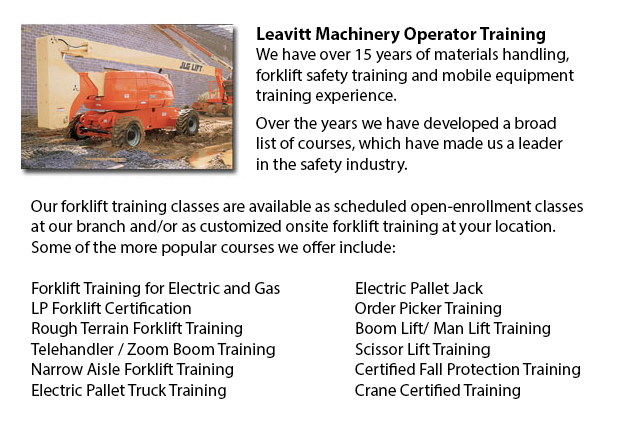
Markham Aerial Lift Certification - Aerial Lift Certification is for personnel who require a thorough knowledge of aerial lift safety. Maintenance workers, construction craftsmen and supervisors need this training to make sure that inspectors and operators are qualified. State, federal and provincial regulations require companies to be certified in order to do in-house aerial lift checks.
Nearly all workers who are required to work at elevated level would often utilize the same means to get to these required heights, regardless of the type of work that has to be carried out. Aerial lifts and scissor lifts are the mechanized devices utilized in order to lift equipment and employees to elevated places.
Bucket trucks referred to as Cherry Pickers are aerial platforms which feature a supported boom and bucket. The main hazard to utilizing this type of platform is often tip-overs, falls and electrocutions. Certification guarantees that workers who use aerial lifts are trained correctly to safely operate the machine. Training also guarantees that workers know how to maintain aerial work platforms in accordance with the instructions of the manufacturer.
Aerial lift training certification programs would consist of the following: Vehicle-mounted aerial lifts, Boom-supported aerial lifts and scissors lifts. Trainees would know about safe operating procedures and will gain knowledge about the dangers that normally result in aerial lift accidents. They would be technically competent in the different kinds of aerial lifts, in addition to terms and components. From selecting the best aerial lift for the job to interpreting rated capacity charts, the certification program would provide employees with all that they have to know to safely perform their work.
Individuals who are assigned the job of checking aerial lift devices need to know how to inspect gears, booms, structural parts, operating mechanisms, functions and control systems, power plants, braking systems, attachments, shafts and pins, hydraulic, pneumatic and electric components, operator aids and emergency safety devices, etc. Training would consist of the following: the inspector's role in lessening accidents and liability exposure; monthly and annual check; how to perform a pre-use; how to write inspection reports; how to apply and interpret rules regarding aerial lift safety standards; inspection procedures, checklists and techniques; following record keeping requirements; applying and understanding the three levels of aerial lift inspection; and when to remove aerial lifts from service if they are defective.
-
Markham Forklift Certification Schools
Markham Forklift Certification Schools - Forklift Certification is mandatory in North America. Hence, forklift training programs are essential both for businesses and for people seeking jobs in industries as forklift operators. Forklift training focu... More -
Telehandler Training in Markham
Telescopic handlers normally called telehandlers for short, are a very popular piece of heavy construction equipment. They are commonly utilized in the construction and agricultural trades. These machines have maximum reaching capability and can get... More -
Markham Zoom Boom Training
Markham Zoom Boom Training - Zoom Boom Training is designed to train operators on variable reach forklifts. The objectives of the training are to impart an understanding of the physics of the machinery, and to outline the operator's tasks. This progr... More -
Markham Heavy Equipment Ticket
Markham Heavy Equipment Ticket - A heavy equipment operator will utilize different construction machinery, depending upon the nature of the task at hand. The large equipment are constructed to carry out specific tasks in the most efficient method for... More -
Markham Scissor Lift Training
Markham Scissor Lift Training - When operating a scissor lift, they must be utilized competently so as to protect the safety of the other employees inside the workplace and to protect the safety of the machine. Competent operators are trained to driv... More -
Markham Manlift Operator Training
Markham Manlift Operator Training - The aerial lift or manlift is a specialized kind of hydraulic platform which is designed to raise a person vertically giving it an alternate name of a vertical personnel lift. These machines are widely used for a m... More -
Markham Heavy Equipment Training
Markham Heavy Equipment Training - The two most common kinds of heavy equipment training are classed into the categories of machinery; equipment that is fashioned with tracks and those with rubber tires. The tracked vehicle are heavy duty equipment s... More -
Markham Forklift Safety Training
Markham Forklift Safety Training - Those wanting work in industries that utilize forklifts should undergo a forklift safety training course before becoming a certified operator of a forklift. There are various ways to go about getting forklift safety... More

Forklift Certification Markham
TOLL FREE: 1-888-254-6157
Markham, Ontario
forkliftcertificationmarkham.com
Email Us
About Us


